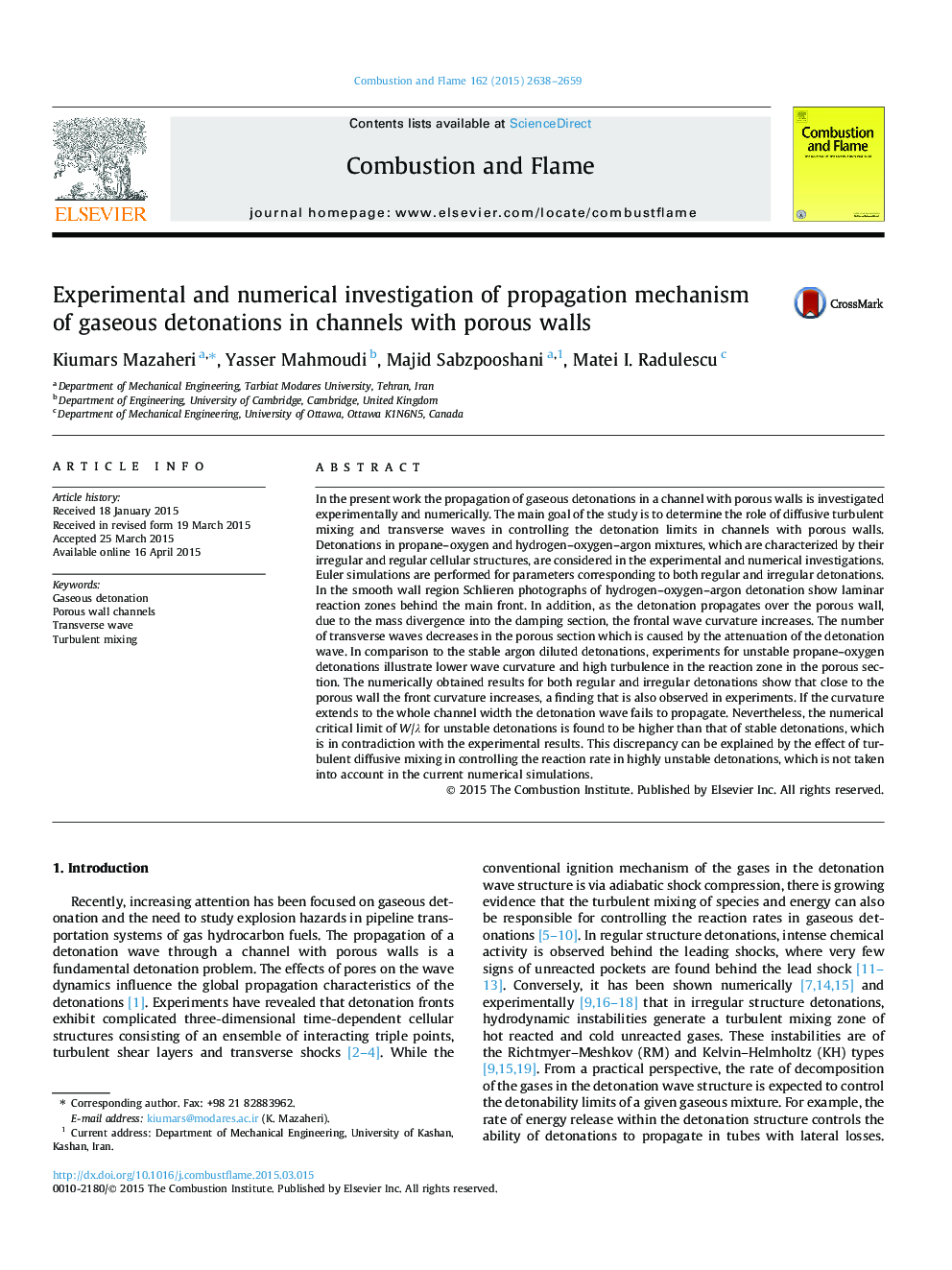| کد مقاله | کد نشریه | سال انتشار | مقاله انگلیسی | نسخه تمام متن |
|---|---|---|---|---|
| 166294 | 457751 | 2015 | 22 صفحه PDF | دانلود رایگان |
In the present work the propagation of gaseous detonations in a channel with porous walls is investigated experimentally and numerically. The main goal of the study is to determine the role of diffusive turbulent mixing and transverse waves in controlling the detonation limits in channels with porous walls. Detonations in propane–oxygen and hydrogen–oxygen–argon mixtures, which are characterized by their irregular and regular cellular structures, are considered in the experimental and numerical investigations. Euler simulations are performed for parameters corresponding to both regular and irregular detonations. In the smooth wall region Schlieren photographs of hydrogen–oxygen–argon detonation show laminar reaction zones behind the main front. In addition, as the detonation propagates over the porous wall, due to the mass divergence into the damping section, the frontal wave curvature increases. The number of transverse waves decreases in the porous section which is caused by the attenuation of the detonation wave. In comparison to the stable argon diluted detonations, experiments for unstable propane–oxygen detonations illustrate lower wave curvature and high turbulence in the reaction zone in the porous section. The numerically obtained results for both regular and irregular detonations show that close to the porous wall the front curvature increases, a finding that is also observed in experiments. If the curvature extends to the whole channel width the detonation wave fails to propagate. Nevertheless, the numerical critical limit of W/λ for unstable detonations is found to be higher than that of stable detonations, which is in contradiction with the experimental results. This discrepancy can be explained by the effect of turbulent diffusive mixing in controlling the reaction rate in highly unstable detonations, which is not taken into account in the current numerical simulations.
Journal: Combustion and Flame - Volume 162, Issue 6, June 2015, Pages 2638–2659
